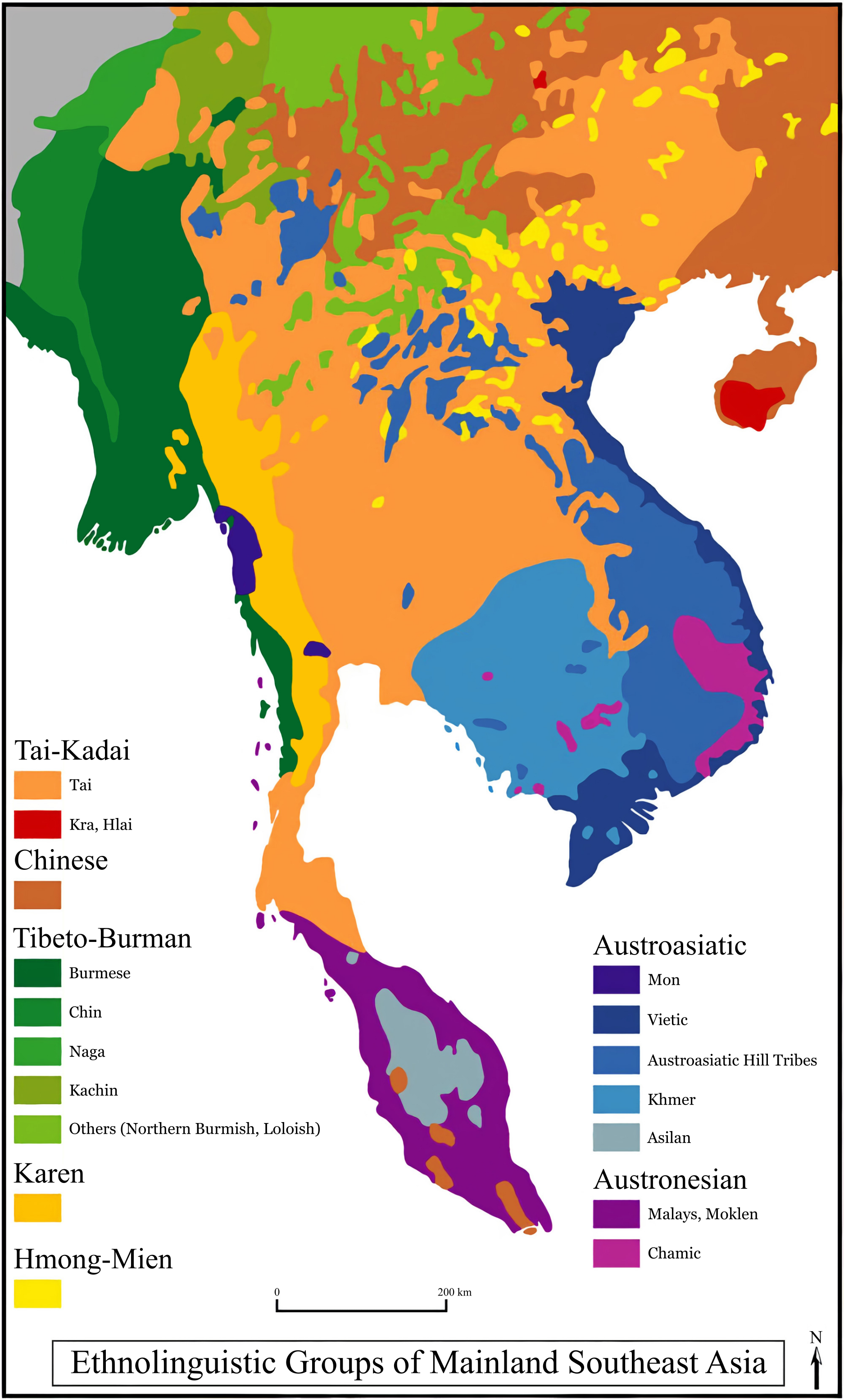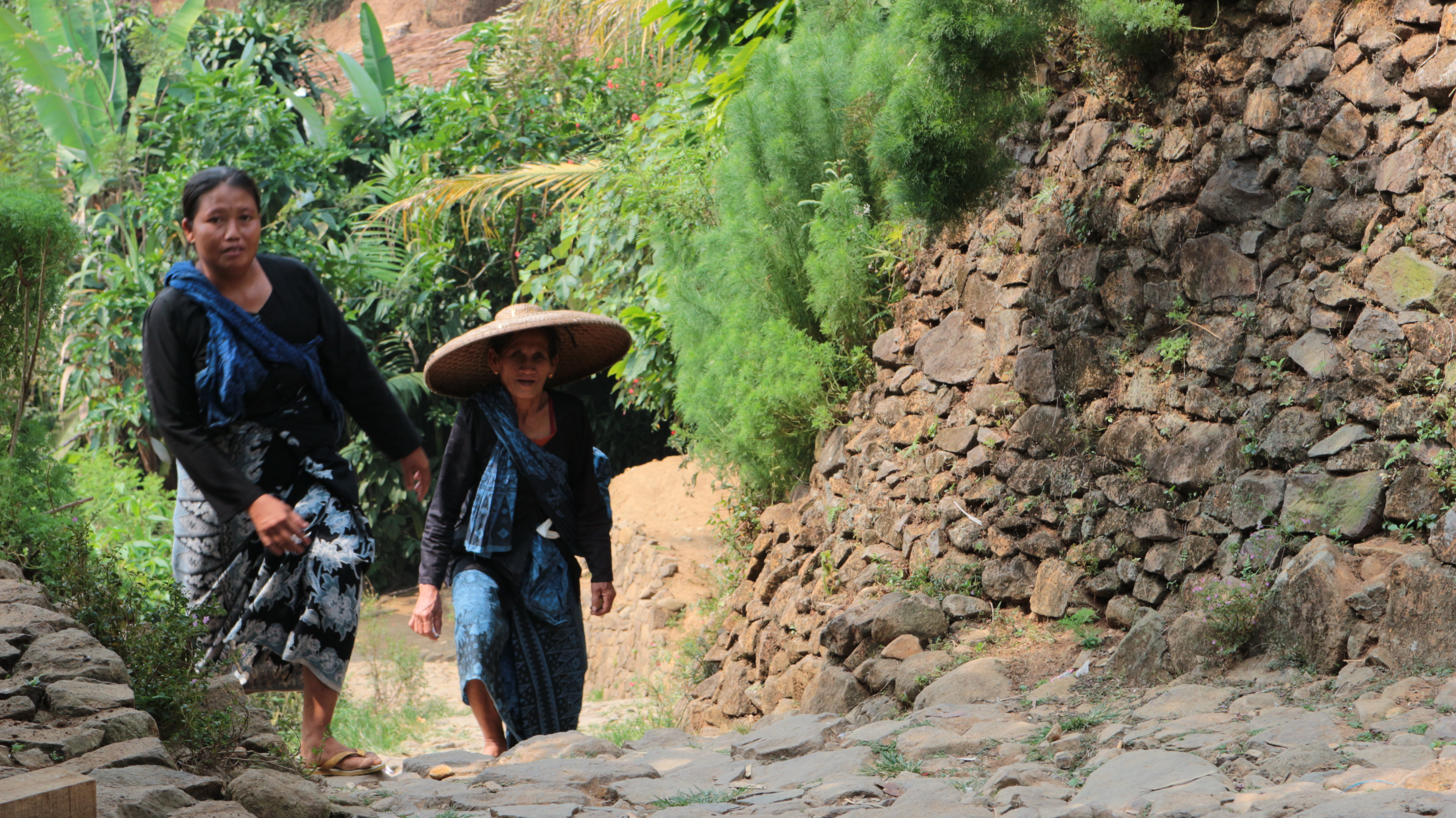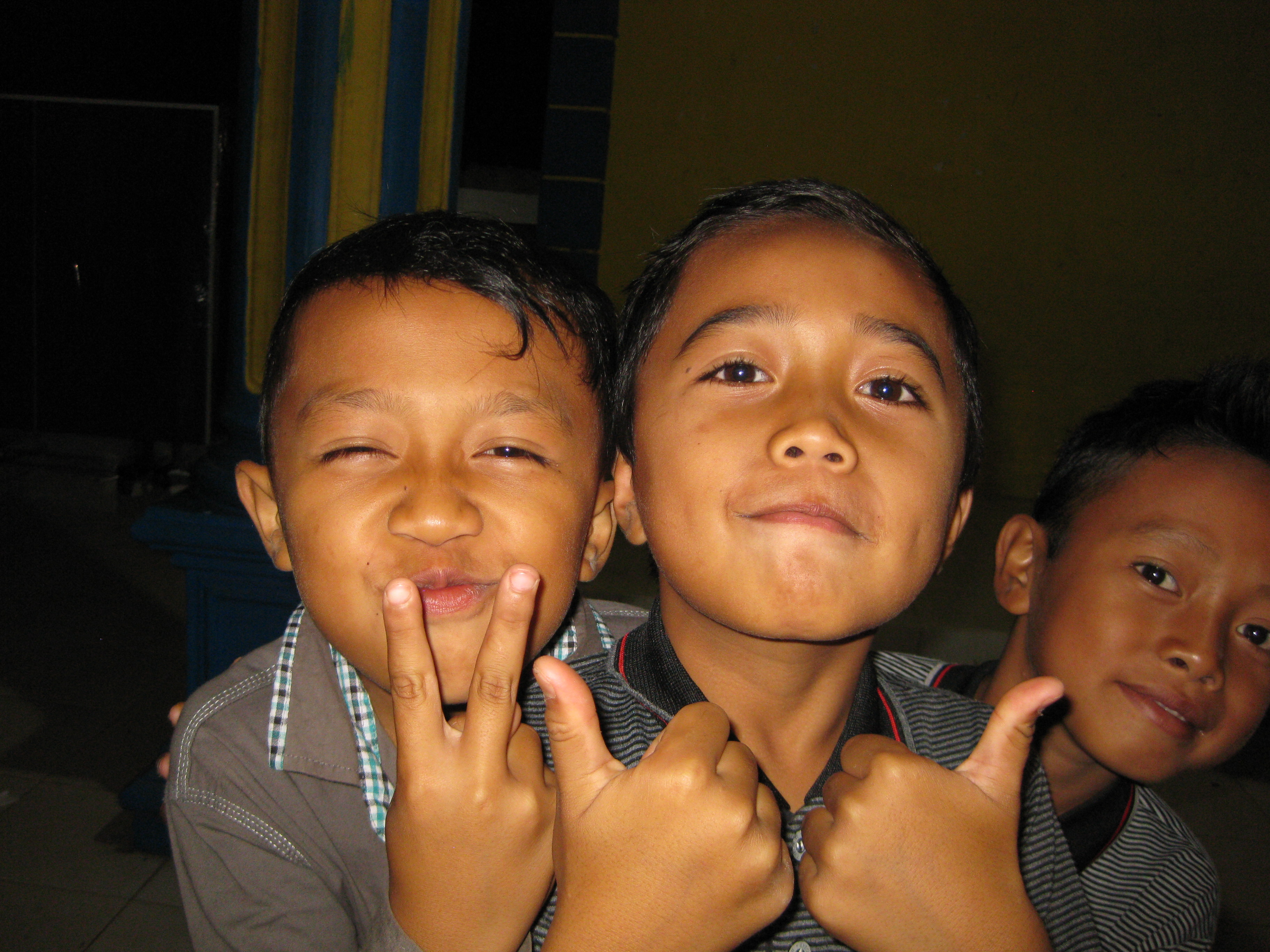|
Ethnic Groups Of Southeast Asia
The ethnic groups of Southeast Asia comprise many different linguistic stocks. Apart from Negrito, which is a physical description, they are here arranged according to the family their languages belong to. Besides indigenous Southeast Asians, many East Asians and South Asians call Southeast Asia their home. The total Southeast Asian population stands at 655 million (2019). Austro-Asiatic *Vietnamese people *Thổ people *Chut people *Muong people *Mon people *Palaung people *Wa people *Khmer people *Bahnar people * Katuic peoples * Pear people *Khmu people *Nicobarese people * Senoi peoples Austronesian *Javanese people **Osing people ** Tenggerese *Sundanese people ** Baduy ** Kasepuhan *Malay people ** Chitty ** Jawi Peranakan *Minangkabau people *Madurese people *Batak people * Balinese people *Sasak people *Sumbawa people *Banjar people *Buginese people **Makassar People **Toraja *Mandarese People * Minahasan People *Acehnese people * Bantenese *Dayak people **Iban peo ... [...More Info...] [...Related Items...] OR: [Wikipedia] [Google] [Baidu] |
Ethnolinguistic Groups Of Mainland Southeast Asia
Ethnolinguistics (sometimes called cultural linguistics) is an area of anthropological linguistics that studies the relationship between a language and the nonlinguistic cultural behavior of the people who speak that language. __NOTOC__ Examples Ethnolinguists study the way perception and conceptualization influences language and show how that is linked to different cultures and societies. An example is how spatial orientation is expressed in various cultures. In many societies, words for the cardinal directions ''east'' and ''west'' are derived from terms for sunrise/sunset. The nomenclature for cardinal directions of Inuit speakers of Greenland, however, is based on geographical landmarks such as the river system and one's position on the coast. Similarly, the Yurok lack the idea of cardinal directions; they orient themselves with respect to their principal geographic feature, the Klamath River. Cultural linguistics Cultural Linguistics is a related branch of linguistics tha ... [...More Info...] [...Related Items...] OR: [Wikipedia] [Google] [Baidu] |
Katuic Peoples
The Katuic peoples live mainly in central Vietnam's Truong Son region and the highlands of south eastern Laos and speak the Katuic languages. The peoples include the Katu, Ta Oi, Pacoh, Bru (Van Kieu) in Vietnam and the Kuy. The Katuic groups in Laos include the Kuy, Bru, Ta'oih, Kantu, Dakkang, Triw, Chatong and Ngeq. They subsist mainly on shifting cultivation, hunting and fishing. They traditionally lived in small villages centered on a communal house. Their religion revolves around the spirits of the forest, the Rice Mother and ancestor spirits. Even today, these groups retain most of their traditions and spirit beliefs. However, they have been heavily affected by the newly constructed Ho Chi Minh Highway, which cuts straight through the homeland of the Vietnamese Katuic groups. The French military The French Armed Forces (french: Forces armées françaises) encompass the Army, the Navy, the Air and Space Force and the Gendarmerie of the French Republic. The Pre ... [...More Info...] [...Related Items...] OR: [Wikipedia] [Google] [Baidu] |
Ethnic Malays
Malays ( ms, Orang Melayu, Jawi: أورڠ ملايو) are an Austronesian ethnic group native to eastern Sumatra, the Malay Peninsula and coastal Borneo, as well as the smaller islands that lie between these locations — areas that are collectively known as the Malay world. These locations are today part of the countries of Malaysia, Indonesia (eastern and southern Sumatra, Bangka Belitung Islands, western coastal Borneo (Kalimantan) and Riau Islands), southern part of Thailand ( Pattani, Satun, Songkhla, Yala and Narathiwat), Singapore and Brunei Darussalam. There is considerable linguistic, cultural, artistic and social diversity among the many Malay subgroups, mainly due to hundreds of years of immigration and assimilation of various regional ethnicity and tribes within Maritime Southeast Asia. Historically, the Malay population is descended primarily from the earlier Malayic-speaking Austronesians and Austroasiatic tribes who founded several ancient maritime tradi ... [...More Info...] [...Related Items...] OR: [Wikipedia] [Google] [Baidu] |
Kasepuhan
The Kasepuhan or Kasepuhan Banten Kidul are a traditional Sundanese people, Sundanese community of approximately 5,300 people, who live in the southern part of Gunung Halimun National Park, in the Indonesian province of West Java. Gunung Halimun National Park is located within the borders of the Sukabumi Regency, Bogor and southern Banten province. The Kasepuhan is called "Kasepuhan Banten Kidul" (Kasepuhan of Southern Banten), their main village is Ciptagelar in the Cisolok subdistrict (''kecamatan'') in the western part of the Sukabumi Regency. The current head of the community, Abah Ugih, inherited the position of leader when his father, Abah Anom, died at the age of 54. Etymology The word ''kasepuhan'' is formed on ''sepuh'', which means "old" in the Sundanese language. It refers to a way of living based on ancestral traditions and eventually, to the local community who lives according to these traditions. History and tradition According to oral information, the Kasepuhan have ... [...More Info...] [...Related Items...] OR: [Wikipedia] [Google] [Baidu] |
Baduy People
Baduy people (sometimes spelled as Badui or Kanekes) are an indigenous Sundanese ethnic group native to the southeastern part of Banten specifically Lebak Regency on western hemisphere of Java island in Indonesia. Etymology The term is a short form derived from in Baduy language, it is the native Sundanesic term which refers to the endemic vine plant in western hemisphere of Java island which are usually used as herbal medicine since ancient times. As part of Sundanesic family, the term also known in Old Sundanese and Sundanese languages which bears the same meaning; the Cibaduyut region in the Sundanese cultural land region may derived from the same etymology. It is likely that in ancient times, there was once a river called the Baduyut River, because the term () itself literally means 'Baduyut River' in Sundanese language; so it is very possible if this tribe was once named after the name of that river. However, the Baduy people sometimes would prefer to be called as ... [...More Info...] [...Related Items...] OR: [Wikipedia] [Google] [Baidu] |
Sundanese People
The Sunda or Sundanese ( id, Orang Sunda; su, ᮅᮛᮀ ᮞᮥᮔ᮪ᮓ, Urang Sunda) are an indigenous ethnic group native to the western region of Java island in Indonesia, primarily West Java. They number approximately 42 million and form Indonesia's second most populous ethnic group. They speak the Sundanese language, which is part of the Austronesian languages. The western third of the island of Java, namely the provinces of West Java, Banten, and Jakarta, as well as the westernmost part of Central Java, is called by the Sundanese people ''Tatar Sunda'' or ''Pasundan'' (meaning Sundanese land). Sundanese migrants can also be found in Lampung and South Sumatra, and to a lesser extent in Central Java and East Java. The Sundanese people can also be found on several other islands in Indonesia such as Sumatra, Kalimantan, Sulawesi, Bali and Papua. Origins Migration theories The Sundanese are of Austronesian origins and are thought to have originated in Taiwan. T ... [...More Info...] [...Related Items...] OR: [Wikipedia] [Google] [Baidu] |
Tenggerese People
The Tenggerese people are a sub-ethnic group of Javanese in eastern Java who claim to be the descendants of the Majapahit princes. Their population of roughly 100,000 is centered in 30 villages in the isolated Tengger mountains ( Mount Bromo) in the Bromo Tengger Semeru National Park in eastern Java. Scattered communities of Tenggerese also exist in the Pasuruan, Probolinggo, Malang, and Lumajang Regencies of eastern Java. They are traditionally believed to be the descendants of legendary Roro Anteng and Joko Seger. The Tenggerese are considered an ethnic sub-group of the Javanese people. History Before the 15th century, the Tenggerese people was closely linked with the Majapahit and other kingdoms. According to legend, Jaka Seger and Roro Anteng are the ancestors of the Tenggerese. Language The Tenggerese speak an archaic Javanese (Majapahit) dialect called Tengger Javanese. Elements of modern Javanese influences can be heard in their speech. They have their own writt ... [...More Info...] [...Related Items...] OR: [Wikipedia] [Google] [Baidu] |
Osing People
The Osing or Using (Osing: ; ) are indigenous ethnic group native to easternmost part of the Java island (especially in Banyuwangi), Indonesia. They are the descendants of the people of the ancient Kingdom of Blambangan. The population of Osing people are approximately 400,000 which concentrated in the Banyuwangi Regency of East Java Province. Demography The Osing people are settled in several districts in the central and northern regions of Banyuwangi Regency especially in Banyuwangi district, Rogojampi district, Sempu district, Glagah district, Singojuruh district, Giri district, Kalipuro district and Songgon district. The Osing community or also commonly known as Laré Osing by some circles and as a result of research, are considered as the natives of Banyuwangi Regency, including an area at the easternmost tip of the Java island that is also known as Blambangan Peninsula. This community of people are spread throughout fertile farming villages in the central and eastern r ... [...More Info...] [...Related Items...] OR: [Wikipedia] [Google] [Baidu] |
Javanese People
The Javanese ( id, Orang Jawa; jv, ꦮꦺꦴꦁꦗꦮ, ''Wong Jawa'' ; , ''Tiyang Jawi'' ) are an ethnic group native to the central and eastern part of the Indonesian island of Java. With approximately 100 million people, Javanese people are the largest ethnic group in Indonesia and the whole Southeast Asia in general. Their native language is Javanese, it is the largest of the Austronesian languages in number of native speakers and also the largest regional language in Southeast Asia. The Javanese as the largest ethnic group in the region have dominated the historical, social, and political landscape in the past as well as in modern Indonesia and Southeast Asia. There are significant numbers of Javanese diaspora outside of central and eastern Java regions, including the other provinces of Indonesia, and also in another countries such as Suriname, Singapore, Malaysia, Egypt, Saudi Arabia, South Africa, Sri Lanka, Yemen and the Netherlands. The Javanese ethnic group ... [...More Info...] [...Related Items...] OR: [Wikipedia] [Google] [Baidu] |
Chronological Dispersal Of Austronesian People Across The Pacific
Chronology (from Latin ''chronologia'', from Ancient Greek , ''chrónos'', "time"; and , ''-logia'') is the science of arranging events in their order of occurrence in time. Consider, for example, the use of a timeline or sequence of events. It is also "the determination of the actual temporal sequence of past events".Memidex/WordNet, "chronology,memidex.com (accessed September 25, 2010). Chronology is a part of periodization. It is also a part of the discipline of history including earth history, the earth sciences, and study of the geologic time scale. Related fields Chronology is the science of locating historical events in time. It relies upon chronometry, which is also known as timekeeping, and historiography, which examines the writing of history and the use of historical methods. Radiocarbon dating estimates the age of formerly living things by measuring the proportion of carbon-14 isotope in their carbon content. Dendrochronology estimates the age of trees by correlat ... [...More Info...] [...Related Items...] OR: [Wikipedia] [Google] [Baidu] |
Senoi
The Senoi (also spelled Sengoi and Sng'oi) are a group of Malaysian peoples classified among the Orang Asli, the indigenous peoples of Peninsular Malaysia. They are the most numerous of the Orang Asli and widely distributed across the peninsula. The Senois speak various branches of Aslian languages, which in turn form a branch of Austroasiatic languages. Many of them are also bilingual in the national language, the Malaysian language (Bahasa Malaysia). Status and identity The Malaysian government classifies the indigenous people of Peninsular Malaysia as Orang Asli (meaning, "indigenous peoples"). There are 18 officially recognized tribes under the auspices of the Department of Aboriginal Affairs (''Jabatan Kemajuan Orang Asli'', JAKOA). They are divided into 3 ethnic groups namely, Semang (Negrito), Senoi and Proto-Malays, which consist of 6 tribes each. Such a division is conditional and is based primarily on the convenience of the state to perform administrative funct ... [...More Info...] [...Related Items...] OR: [Wikipedia] [Google] [Baidu] |





